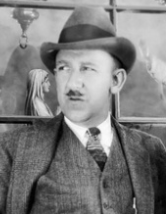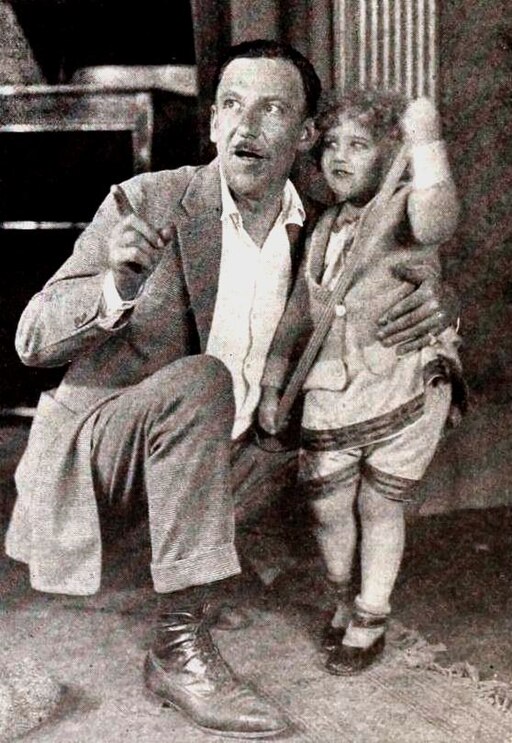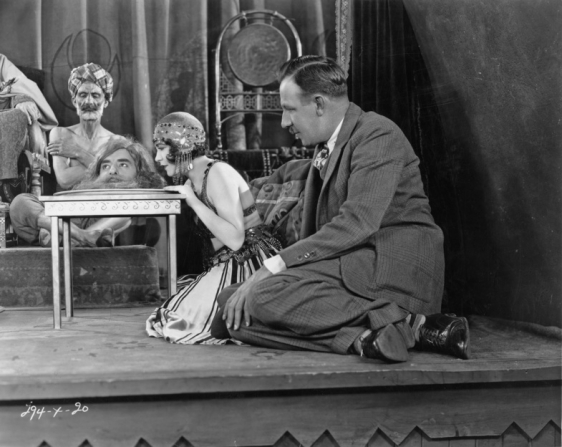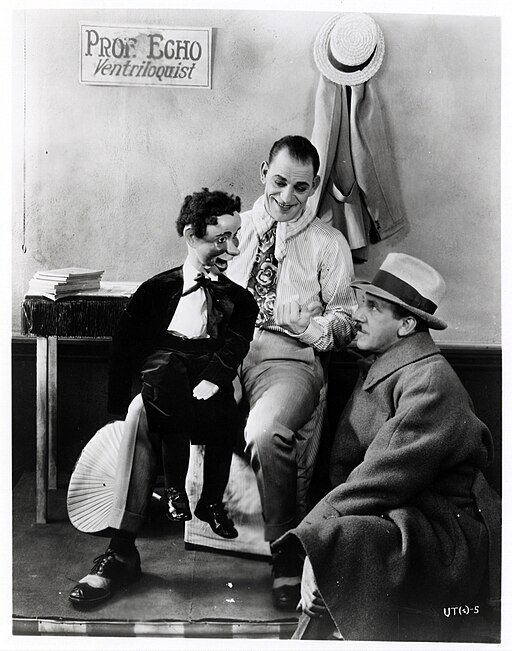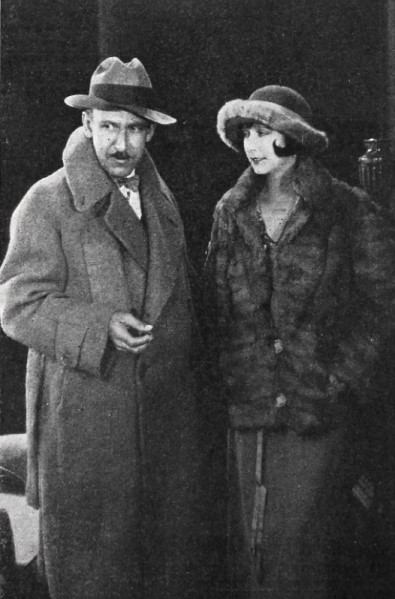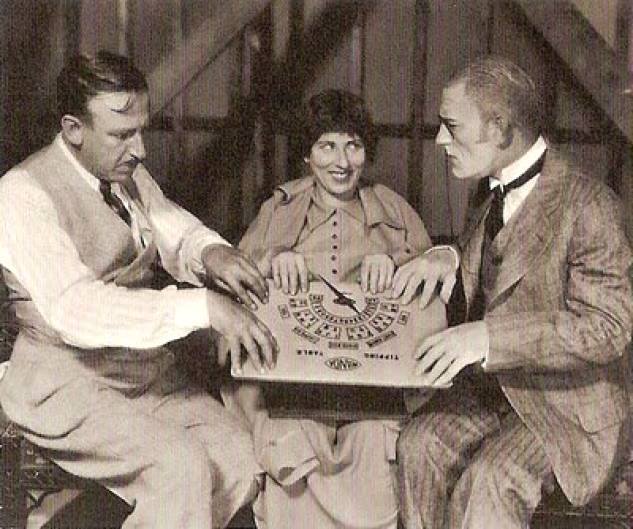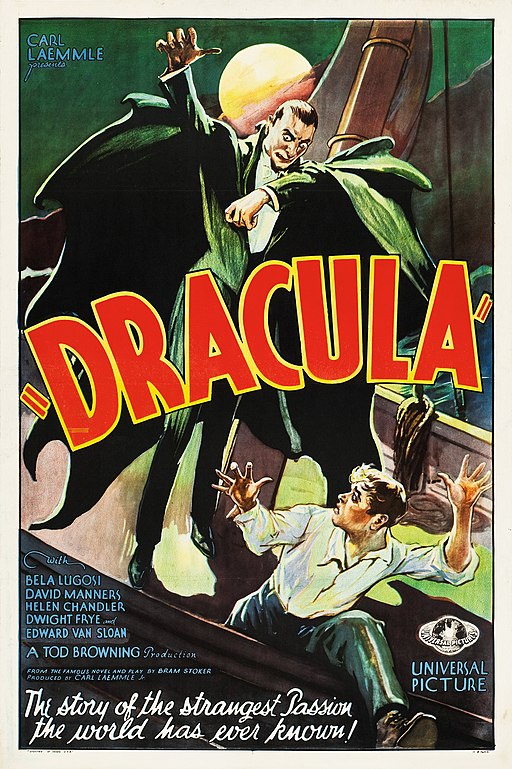Tod Browning
back| Full Name | Charles Albert Browning, Jr. |
| Born | July 12, 1880 |
| Birthplace | Louisville, Kentucky, USA |
| Died | October 6, 1962 |
| Buried | Valhalla Memorial Park Cemetery, North Hollywood, California, USA |
| Married to | Amy Louise Stevens (separated later but not officially divorced) - Relation with Alice Wilson (until his death) |
| Children | None |
| Notable films | Dracula (1931) - Freaks (1932) - London After Midnight (1927) - The Unknown (1927) |
Tod Browning
The Edgar Allan Poe of Cinema
Tod Browning's career spanned the silent and early sound eras of cinema. He began his entertainment career as a performer in a traveling circus, vaudeville, and carnival shows, an experience that deeply influenced his later film work, particularly his fascination with the unusual and the grotesque.
Despite the success of "Dracula," Browning's career faced challenges following the controversial release of "Freaks," which was heavily edited and banned in several countries due to its shocking content. The film's initial commercial failure and critical backlash significantly impacted Browning's career, though he continued to work until the late 1930s.
Related
Tod Browning (1880 – 1962)
Biography and Overview of his Movie Career
Tod Browning, born Charles Albert Browning, Jr. on July 12, 1880, in Louisville, Kentucky, grew up in a middle-class family. His early fascination with the circus and carnival life set the stage for what would become a pioneering career in film, marked by an enduring fascination with the macabre and the grotesque.
Early Life and Circus Career
Browning ran away from home as a teenager to join a traveling circus, an experience that profoundly influenced his later work. He performed various roles in the circus, vaudeville, and sideshow acts, including a clown, magician, and even a barker. This exposure to the world of entertainment, especially the darker and more bizarre aspects, would later permeate his films.
Transition to Film
Transitioning to film in the early 20th century, Browning started his career as an actor in silent films before moving behind the camera. His early work as a director was heavily influenced by his experiences in show business, showcasing a natural flair for visual storytelling and a penchant for exploring themes of identity, deformity, and the grotesque.
Collaboration with Lon Chaney
Browning's collaboration with Lon Chaney, known as "The Man of a Thousand Faces," produced some of the most memorable films of the silent era. Films like "The Unknown" (1927) and "London After Midnight" (1927) highlighted Chaney's remarkable ability to transform himself and Browning's skill in creating atmospheric, haunting narratives. Their partnership was a testament to early cinema's ability to explore complex, often disturbing themes through innovative makeup and practical effects.
Success with Dracula
Browning's most famous film, "Dracula" (1931), starring Bela Lugosi, cemented his reputation as a master of the horror genre. The film's success was pivotal in defining the visual and thematic standards of horror cinema. Its atmospheric tension, combined with Lugosi's iconic performance, created a lasting legacy that continues to influence the horror genre.
Controversy and "Freaks"
The release of "Freaks" in 1932 marked the most controversial point in Browning's career. Featuring a cast of real-life sideshow performers with actual disabilities, the film challenged audiences' perceptions of normalcy and beauty. Initially met with horror and disgust, it was banned in several countries and critically panned, causing significant damage to Browning's career. However, in the years since, "Freaks" has been re-evaluated and is now considered a masterpiece for its empathetic portrayal of its characters and its critique of societal norms.
Later Life and Legacy
Despite the success of "Dracula," the backlash from "Freaks" led to a decline in Browning's career. He directed a few more films but none matched his earlier successes. Browning retired from filmmaking in the late 1930s, living a relatively secluded life until his death on October 6, 1962.
Browning's personal life, particularly his marriage(s) and the ambiguity surrounding his relationships, remained as enigmatic as his films. With no children and few details about his life outside of his work, the focus on Browning's legacy rests predominantly on his contributions to cinema.
Conclusion
Tod Browning's influence on the horror genre and cinema as a whole cannot be overstated. His films explored the fringes of society and the human psyche, pushing the boundaries of narrative and visual storytelling. Today, he is celebrated as a visionary who brought depth, darkness, and complexity to the silver screen, leaving behind a body of work that continues to fascinate and unsettle audiences. His life, marked by early adventures in the circus and a groundbreaking film career, reflects a relentless pursuit of the extraordinary, making Tod Browning a true icon of American cinema.
Tod Browning is often referred to as the "Edgar Allan Poe of cinema," a nickname that encapsulates his penchant for exploring the macabre, the mysterious, and the grotesque in his films. This moniker reflects not only Browning's thematic interests but also his ability to delve into the darker aspects of human nature and society, much like Poe did in literature. Both artists shared a fascination with the gothic and the eerie, and they employed these elements to probe the depths of the human psyche, morality, and existential dread.
The Road to Browning's controversial "Freaks":
Overview of Classic Movies directed by Tod Browning:
Silent Era Films
1925: "The Unholy Three"
A crime drama featuring Lon Chaney as a ventriloquist who teams up with a strongman and a dwarf to form a criminal gang that uses a pet shop as their front.
1927: "The Unknown"
Stars Lon Chaney as Alonzo the Armless, a circus knife thrower who falls in love with Nanon, a young woman who fears men's arms. The film is notable for its bizarre and macabre storyline.
1927: "London After Midnight"
A horror mystery starring Lon Chaney as a vampire-like figure in a tale of murder and vampirism. The film is known for its eerie makeup and is one of the most famous lost films.
1928: "West of Zanzibar"
Chaney plays Phroso, a paralyzed magician who seeks revenge in the African jungle against the man who stole his wife. The film is known for its dark themes and exotic setting.
1929: "Where East Is East"
Chaney stars as "Tiger Haynes," a wild animal trapper in Asia who deals with personal and familial conflicts. The film explores themes of love, betrayal, and revenge.
Sound Era Films
1931: "Dracula"
One of the most iconic horror films ever made, starring Bela Lugosi as Count Dracula. The film set the standard for vampire movies and is celebrated for its atmospheric tension and gothic settings.
1931: "Freaks"
A horror film featuring actual circus performers with real disabilities. The story revolves around a beautiful trapeze artist who conspires with her lover to murder a sideshow performer for his inheritance. The film was controversial at its release but has since been recognized as a masterpiece for its empathetic portrayal of its characters.
1932: "The Miracle Man"
A film about a group of con artists who exploit a faith healer in their schemes. The movie is considered lost, with only fragments surviving.
1935: "Mark of the Vampire"
A remake of Browning's own "London After Midnight," this film stars Bela Lugosi as Count Mora, a vampire suspected of causing a series of deaths in a small village. The film is known for its twist ending and gothic atmosphere.
1936: "The Devil-Doll"
A science fiction horror film about an escaped convict who uses miniaturized people to exact revenge. The film is noted for its innovative special effects and dark themes.
1939: "Miracles for Sale"
Browning's last film, a mystery-comedy about a magician who exposes fake spiritualists. It showcases Browning's continued interest in the world of magic and illusion.
An Analysis of the Directing Style of Tod Browning:
Tod Browning's directing style is a fascinating study in early cinema's exploration of the macabre, the grotesque, and the human psyche. His work, especially during the silent and early sound eras of film, showcases a unique blend of horror, drama, and sometimes romance, with a distinct inclination towards stories featuring outsiders, deformity, and the dark underbelly of society. Here's an analysis of key elements that define Browning's directing style:
Emphasis on the Grotesque and Macabre
Browning had a notable fascination with the grotesque, often drawing on his own experiences with the circus and sideshow entertainments. This is evident in films like "Freaks," where he casts real-life sideshow performers with physical deformities as protagonists, challenging audiences' perceptions of normalcy and beauty. His films frequently explored themes of physical and psychological transformation, as seen in "The Unknown," where the protagonist undergoes a radical physical change to win the affection of the woman he loves.
Atmosphere over Explicit Horror
Unlike the explicit horror and gore that characterize many modern horror films, Browning's work relied heavily on atmosphere, suggestion, and psychological tension to evoke fear and unease. In "Dracula," for example, the horror is conveyed through the eerie silence of Dracula's castle, the looming shadows, and Bela Lugosi's hypnotic performance. Browning's ability to use minimalistic sets and lighting effectively created a sense of dread and suspense without showing explicit violence.
Use of Misfits and Outsiders as Protagonists
Many of Browning's films center on characters who are outsiders or misfits, often due to physical deformities or societal rejection. This focus reflects a deep empathy for those living on the fringes of society, possibly stemming from Browning's own experiences in the circus. His characters are complex and multifaceted, capable of both kindness and cruelty, which adds depth to his narratives and challenges audiences' prejudices.
Exploration of Human Psychology
Browning's films frequently delve into the complexities of the human mind, exploring themes of obsession, identity, and the thin line between sanity and madness. His characters are often driven by desires that lead them to extreme actions, reflecting Browning's interest in the darker aspects of human nature and the psychological motivations behind behavior.
Innovative Use of Sound and Silence
Transitioning from silent films to talkies, Browning demonstrated a keen understanding of the power of sound—and its absence—to build tension and mood. In "Dracula," the use of silence enhances the Gothic atmosphere, making the sudden sounds more impactful. His silent films, on the other hand, effectively used visual storytelling and intertitles to convey complex emotions and plot developments.
Awards and Recognition:
Browning's most notable work, such as "Dracula" (1931) and "Freaks" (1932), have received critical acclaim and have been recognized for their influence on the genre and cinema. "Dracula," in particular, has been preserved in the United States National Film Registry by the Library of Congress for being "culturally, historically, or aesthetically significant." Similarly, "Freaks" has been re-evaluated by critics over the years and is now considered a masterpiece for its groundbreaking portrayal of people with disabilities and its critique of societal norms.
While specific awards and nominations may not highlight Browning's career, his legacy is reflected in the lasting impact of his films on the horror genre and their continued study and appreciation by film scholars, critics, and fans alike. His innovative techniques, exploration of dark themes, and ability to evoke emotion through atmosphere and character development have cemented his status as a pioneer of early horror cinema.

